1006 Morton Street
Baltimore, MD 21201
410.576.9131 | RW1haWw=
June 24 2008
What is Ethylene Tetraflouroethylene (ETFE)?
Ethylene Tetraflouroethylene, commonly known as ETFE, is a type of plastic that is extremely corrosion resistant and very strong. The material is self cleaning because of its chemical composition (very similar to teflon). In addition, ETFE transmits even more light than glass and weighs only 1% of a comparable glass panel. Installation costs are between 24% and 70% less than for glass panels.
In most architectural applications the material is used in ETFE Pillows. This configuration is a composite of two layers of ETFE that are pressurized to form a more rigid unit. Typically, aluminum strips are sandwiched along the edges to seal the pillows with just a small pressurization hose penetration left open.
ETFE can be coated with a variety of 'frits' to modulate light transmission and appearance. Such strategies can help buildings appear very dynamic as spatial elements. In the case of the National Aquatics Center in Beijing the ETFE pillows are fritted according to a solar / programmatic study to make best use of solar heat gain for pool heating. In another case, at the Duales Pavilion for the Hannover Expo 2000, ETFE panels "had a positive/negative leaf pattern printed on the outer two of the three-layer system. These foil cushions, with a 3% pattern overlap, where pneumatically able to transform the wall envelope from a translucent to an opaque system." This configuration allows designers and building owners to design a 'program' for the building facade.
The most dramatic application of EFTE in a dynamic facade is perhaps the Allianz Arena in Munich, Germany. In this project the ETFE panels are backlit using color variable LED lamps. The entire facade of the building can change colors to display any selection the operators desire.
ETFE is completely recyclable and the assembled system is even made using some recycled material.
For more information visit Wikipedia or manufacturer Vector Foiltec.
Recent Posts
Reimagining Harborplace to Create Space for Both Private Development and Expanded Public Space » Lawyer's Mall Reconstruction Progress » Confronting the Conventions of Customary Practice » Reconceived Facades: New Roles for Old Buildings » Ivy Bookshop Opens for Business! »
Categories
Yellow Balloon Baltimore » Products + Technology » Industry + Practice » Other » Architecture »
Links
Organizations
- USGBC Baltimore Regional Chapter »
- AIA - American Institute of Architects »
- USGBC »
- The Walters Art Museum »
- Green-e »
- Center for Building Performance and Diagnostics (CMU) »
- Green Globes »
- Prefab Lab (UT) »
- Center for Sustainable Development (UT) »
- Architecture 2030 »
- Bioneers »
- Street Films »
- FreeCycle »
- Chesapeake Bay Foundation »
- Archinect »
- BD Online - The Architects Website »
- National Wildlife Foundation »
- Natural Resources Defense Council »
- Overbrook Foundation »
- Merck Family Foundation »
- Ecology Center »
- New Building Institute »
- Neighborhood Design Center »
- The Leonardo Academy »
- ZigerSnead Architects LLP »
- The Rocky Mountain Institute »
- Urban Habitats »
- ACORE - American Council on Renewable Energy »
- Parks and People Foundation of Baltimore »
- Open Society Institute of Baltimore »
- Natural Capital Institute »
- Passive House US »
- Svanen Miljomark »
- Green Restaurant Association »
- Rocky Mountain Institute »
- Green Exhibits »
- Green Roundtable »
- John Elkington - SustainAbility »
- SustainAbility »
- Building America »
- Endangered Species Program - Fish and Wildlife Service »
- Congress for the New Urbanism »
- Urban Land Institute »
- Cool Roof Rating Council »
- Montgomery County (MD) Public Schools Green Building Program »
- National Institute of Standards and Technology Software »
- Scientific Certification Systems »
- Community Greens »
- CBECS »
- CASE - Center for Architecture Science and Ecology »
Interesting Sites
- The Ecologist »
- Treehugger »
- Grist »
- WIRED »
- Planet Architecture »
- MiljoBloggAktuellt - Environmental News Blog (Swedish »
- Sustainable Design Update »
- Eikongraphia »
- World Architecture News »
- The Cool Hunter »
- Design Center »
- ZEDfactory »
- Architen Landrell Associates Ltd. »
- Environmental Graffiti »
- businessGreen »
- Best Green Blogs Directory »
- Groovy Green »
- EcoGeek »
- Urban Ecology »
- Locus Architecture »
- Urbanite »
- A Daily Dose of Architecture »
- Adaptive Reuse »
- Audacious Ideas »
- Big Green Me »
- NOTCOT »
- Sustainable Baltimore »
- Thoughts on Global Warming »
- Green Maven »
- WorldChanging »
- Go For Change »
- Building Green »
- Home Energy Magazine »
- Home Energy Blog »
- FEMA Map Service- Federal Emergency Management Association »
- Architectural Graphic Standards »
- E-Wire »
- Post Carbon Cities »
- Alt Dot Energy »
- Whole Building Design Guide »
- B'more Green »
- EJP: Environmental Justice Partnership »
- Baltidome »
- OneOffMag »
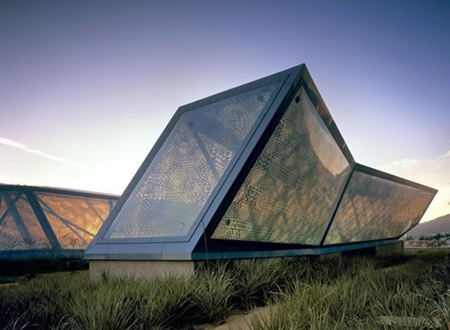
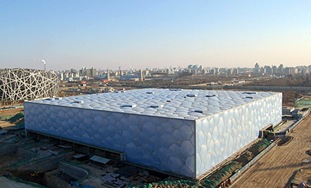
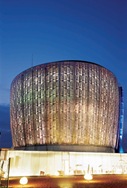
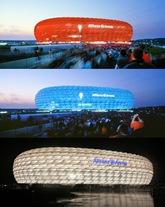
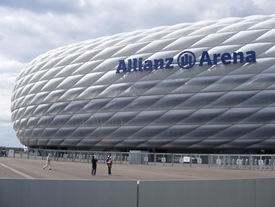
July 10th, 2008 at 3:05 PM
Joan Cwi
I'm very interesting in the product you used for the Brown Center at MICA. Is this it? I love the building, but am writing about a possible second feature of the type of glass used. Does it help birds see the structure and thereby prevent bird strikes? Joan 410-467-5352